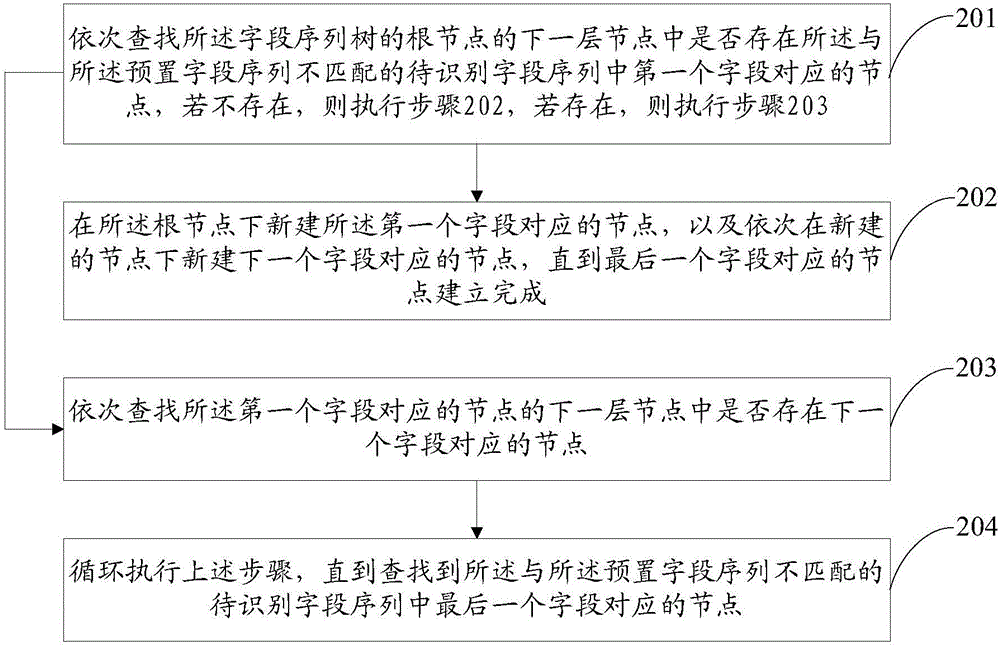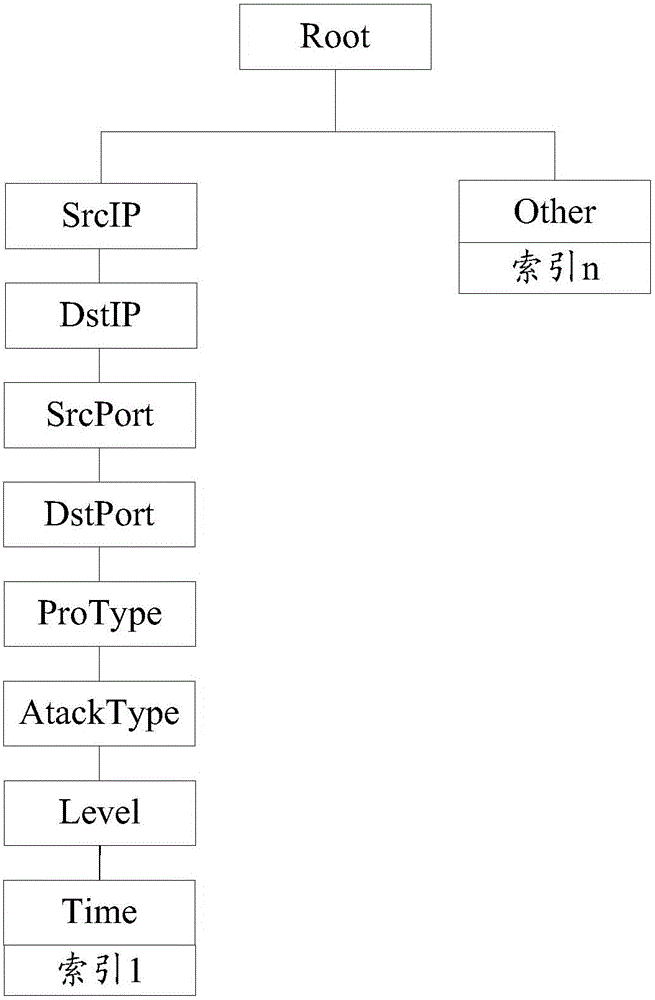Log processing method and device
A processing method and log technology, applied in the network field, can solve the problems of consuming a lot of human resources, low efficiency of log message recognition, cumbersome code or script operation process, etc., and achieve the effect of simplifying the operation process and improving efficiency
- Summary
- Abstract
- Description
- Claims
- Application Information
AI Technical Summary
Problems solved by technology
Method used
Image
Examples
Embodiment Construction
[0021] In order to make the above objects, features and advantages of the present application more obvious and comprehensible, the present application will be further described in detail below in conjunction with the accompanying drawings and specific implementation methods.
[0022] One of the inventive concepts of the embodiment of the present application is to use the field sequence tree to match the field sequence to be identified in the log message, and to identify the unmatched field sequence to be identified, and after the identification is completed, the The corresponding preset field sequence is added in the field sequence tree. In this way, when other log messages with the same field sequence to be identified as the log message are received next time, the field sequence to be identified can be successfully matched with the preset field sequence in the field sequence tree, that is, the new The log messages of the incremental field sequence are identified. Therefore, ...
PUM
 Login to View More
Login to View More Abstract
Description
Claims
Application Information
 Login to View More
Login to View More - R&D
- Intellectual Property
- Life Sciences
- Materials
- Tech Scout
- Unparalleled Data Quality
- Higher Quality Content
- 60% Fewer Hallucinations
Browse by: Latest US Patents, China's latest patents, Technical Efficacy Thesaurus, Application Domain, Technology Topic, Popular Technical Reports.
© 2025 PatSnap. All rights reserved.Legal|Privacy policy|Modern Slavery Act Transparency Statement|Sitemap|About US| Contact US: help@patsnap.com



